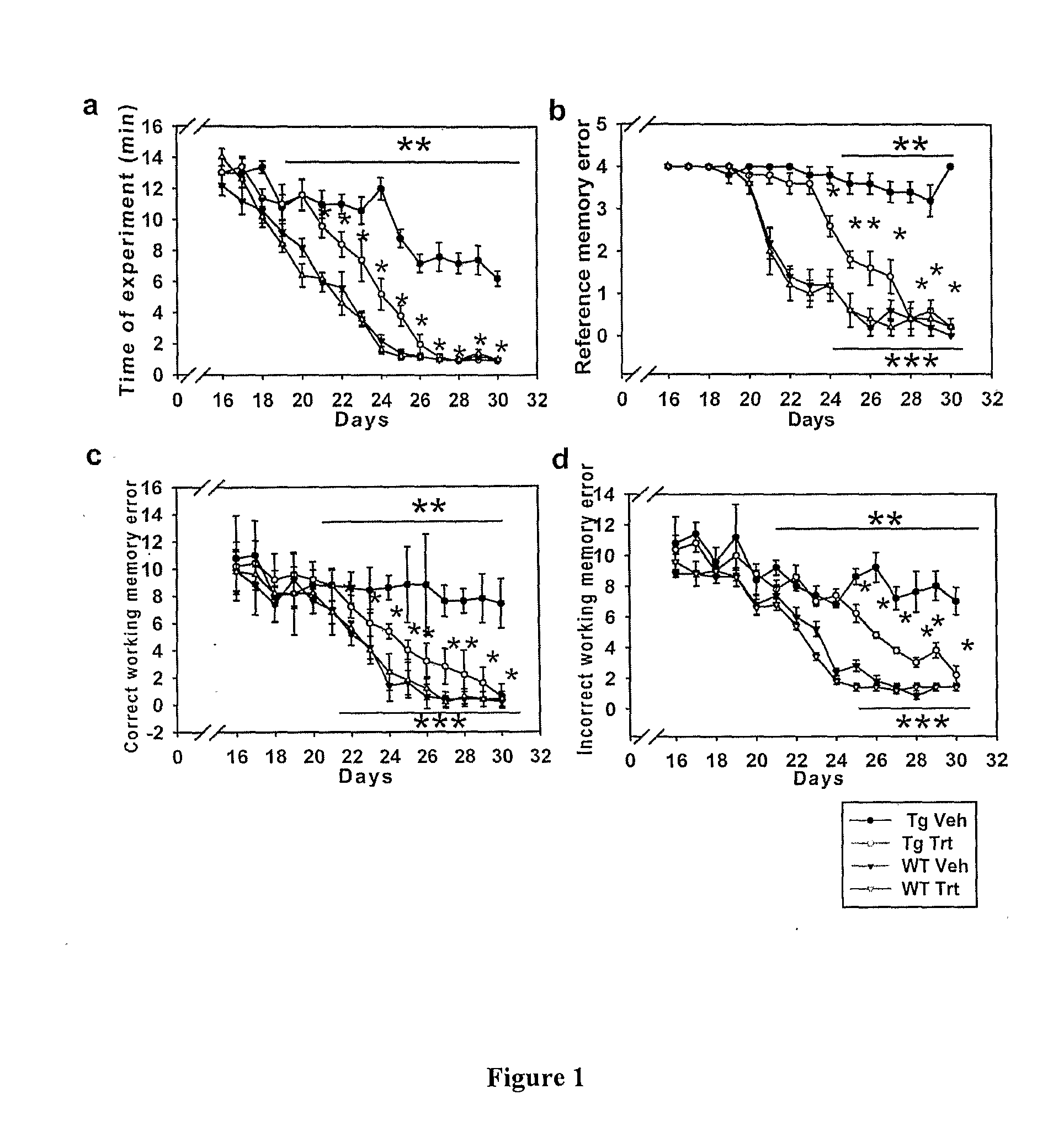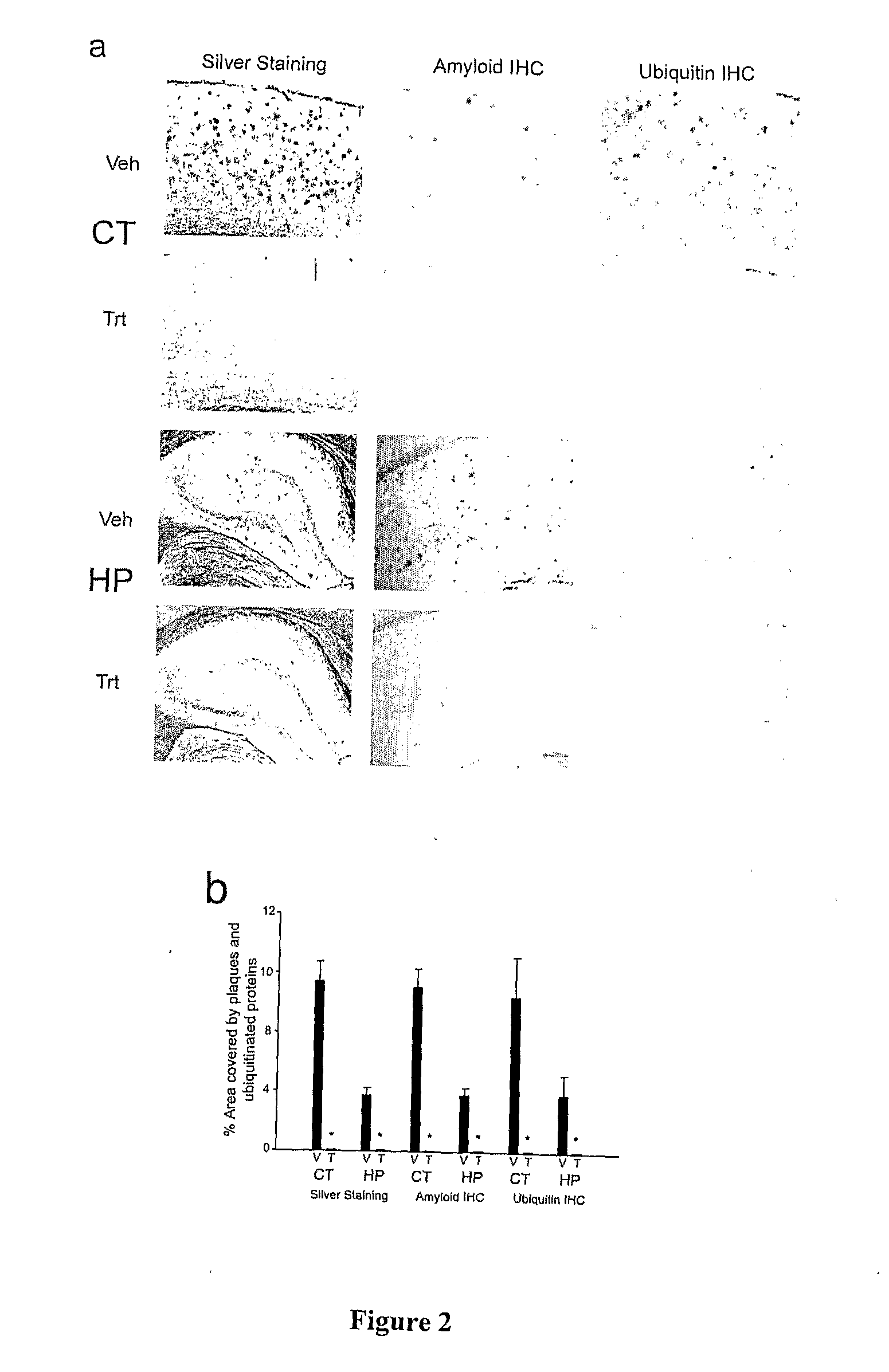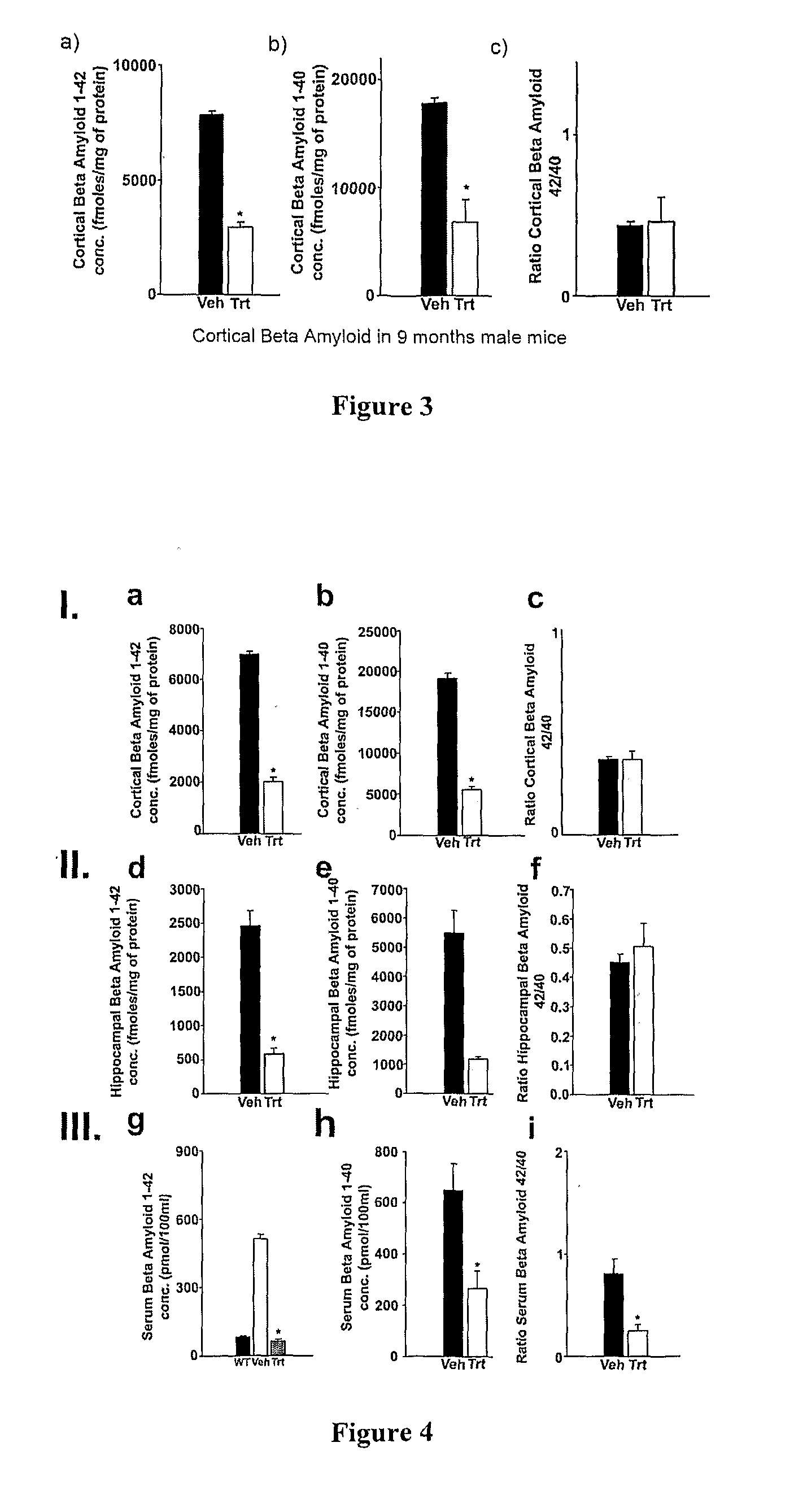Withania somnifera plant extract and method of preparation thereof
a technology of withania somnifera and plant extract, which is applied in the field of withania somnifera plant extract compositions, can solve problems such as inability to cure, and achieve the effect of reducing the burden of -amyloid in the cortex
- Summary
- Abstract
- Description
- Claims
- Application Information
AI Technical Summary
Benefits of technology
Problems solved by technology
Method used
Image
Examples
example 1
[0091]Isolation of Active Fraction from Withania Somnifera
[0092]The powdered plant material i.e. roots of Withania somnifera was obtained from Arya Vaidya Shala, Kottakkal, India. Plant extract was prepared by adding CHCl3 / MeOH (1:1) to root powder in a round bottom flask and stirred for 72 hours at room temperature using a mechanical stirrer. The contents were filtered and the solvent was removed from the clear filtrate under reduced pressure using rotavapor at 35-40° C. preferably 37° C. Fresh CHCl3 / MeOH (1:1) was added to the extracted plant material and the extraction procedure was repeated four times. All the four extracts were checked on TLC using CHCl3 and CHCl3 / MeOH (90:10) solvent systems, to ensure homogeneity with respect to their chemical components. All the four extracts were found to contain similar components and were therefore combined. The solvent was removed from the combined extract using the above-mentioned conditions until frothing started. The traces of solven...
example 2
[0094]Transgenic Animals
[0095]Animals
[0096]The present study used heterozygous B6C3Tg animals of both genders consisting of young (9 months) and old (23 months) mice and age matched non-transgenic littermates. B6C3Tg double transgenic mice express a chimeric mouse / human amyloid precursor protein (Mo / HuAPP695swe) and a mutant human presenilin 1 (PS1-dE9). The Swedish mutations (K595N / M596L) in APP and exon 9 deletion in PS1 elevate the amount of A-beta produced by the transgene by favoring processing through the beta-secretase pathway. Mice were procured from Jackson lab, USA (Borchelt et al., 1996; Jankowsky et al., 2001). The genetic constitution of newborn mice was tracked periodically by genotyping.
[0097]The genetic constitutions of newborn mice were tracked periodically by genotyping. Offsprings were genotyped for the presence of transgene by PCR amplification of genomic DNA extracted from tail.
[0098]Extract and Feeding Schedule
[0099]The plant extract (0.1-1 gm / kg) body weight w...
example 3
[0106]Immunohistochemistry and Staining Protocol
[0107]Animals were treated with drug and vehicle for a period of a month and sacrificed at the end. Brains were extracted, cerebral hemispheres were separated and left hemisphere was kept in 4% paraformaldehyde for fixing and left for 24 hours. The brain was then kept in 30% sucrose solution until the brain sank in the solution. It was then sectioned using cryostat at a thickness of 30 μm. Sections were kept floating in PBS solution. Every 10th section was mounted on slides.
[0108]Silver Staining
[0109]Sections were washed thrice in distilled water for three minutes each (washing step) and then dipped in 10% prewarmed silver nitrate solution for 15 minutes. The washing step was repeated and the washed sections were kept in ammoniacal silver nitrate solution for 30-45 min. The sections were then put into developer solution until color developed. The sections were then kept in 1% ammonia solution to stop the reaction. The washing step was ...
PUM
 Login to View More
Login to View More Abstract
Description
Claims
Application Information
 Login to View More
Login to View More - R&D
- Intellectual Property
- Life Sciences
- Materials
- Tech Scout
- Unparalleled Data Quality
- Higher Quality Content
- 60% Fewer Hallucinations
Browse by: Latest US Patents, China's latest patents, Technical Efficacy Thesaurus, Application Domain, Technology Topic, Popular Technical Reports.
© 2025 PatSnap. All rights reserved.Legal|Privacy policy|Modern Slavery Act Transparency Statement|Sitemap|About US| Contact US: help@patsnap.com



